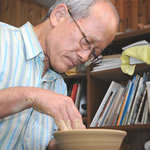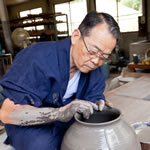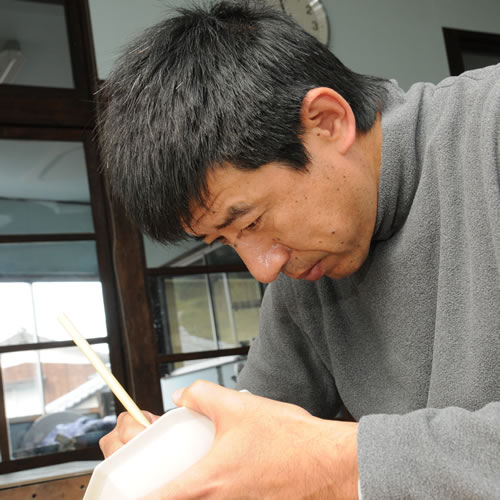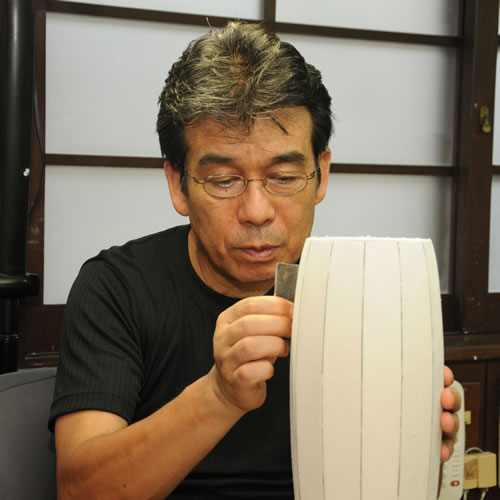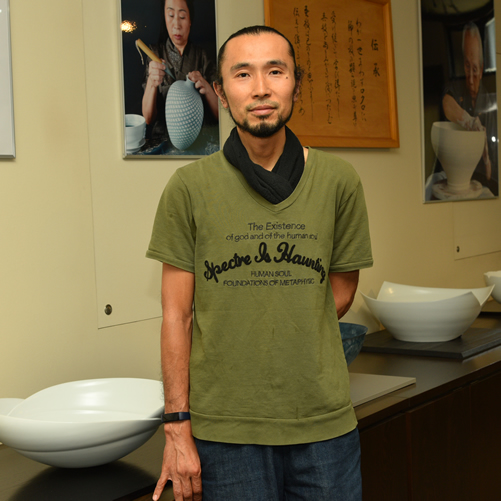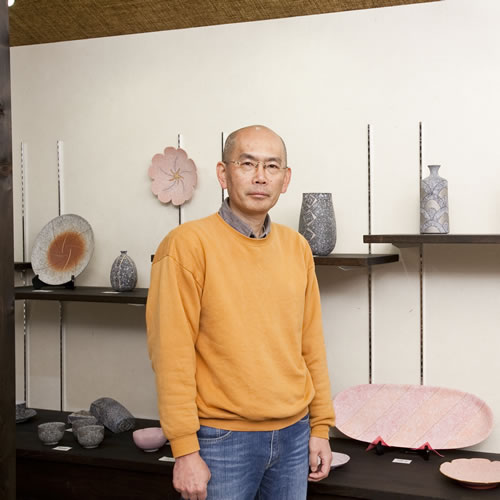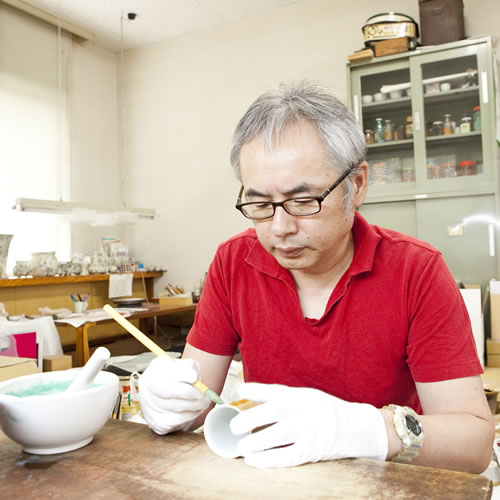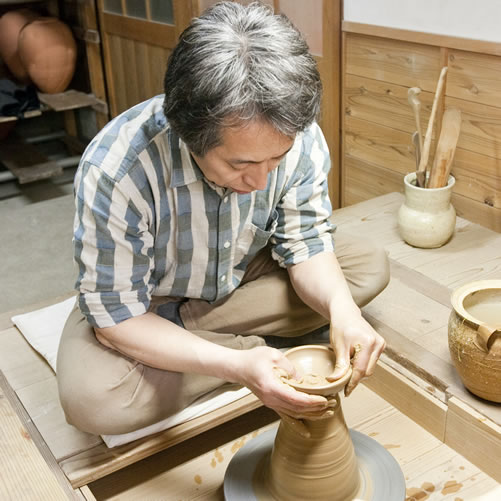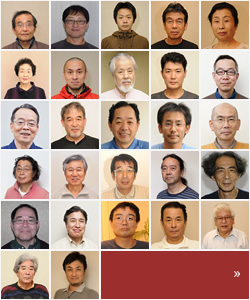TOP > Ceramics > Overglaze Enamel
Overglaze Enamel
Major ornament technique of the ceramic which attracted all such as from ordinary people to royalty and titled nobility
It is called "Imari" among Japanese ceramics, and was popular from Edo period (17th century), one of the most representative Japanese ceramics. Its character is wide, for example "Iroe (overglaze enamel)" with blue, red, yellow, gold, painted on vessels, "Sometsuke (in underglaze blue)" with noble dark blue which is painted on soft white porcelain are famous. It was prosperous in Edo period, and we look back upon history of porcelain which was born in Hizen area to attract all over the world.
LEE, Sampei who was taken by dispatching troops to Korea by TOYOTOMI, Hideyoshi found IZUMIYAMA in the mountain slope of eastern Arita. It was largely influenced with starting making Hizen porcelain. Porcelain stones were able to be taken abundantly as the porcelain's materials from the mountains located in the Arita river upper stream. By the stone's place discovery, the kiln was built in the valley.
The Hizen porcelain achieved technical innovation in the 1,640s and Iroe's technique was especially evolved based on china porcelain. In Japan, china ware was imported from China since before, and it was known as valuable porcelain. There was no technique of Iroe in Korea, and Korean potter couldn't produce porcelain. And at this time, its technique was transferred by Imari's merchant through Chinese in Nagasaki and it was said that the first Iroe porcelain was fired by the first generation Kakiemon. Kakiemon original clay was called "Nigoshide" for a very long time. By the result of having loaded the study and aiming at a white skin with warmth, original color has brewed. Art overglazed with delicacy on this white clay called Nigoshide was typical Kakiemon form and it became popular. Afterwards, the number of kilns which copied Kakiemon's collection successively increased in Europe. The copying of Kakiemon's collection spread from Germany to all over the Europe. In the Netherlands you can see Kakiemon Iroe style on white Delftware ceramic. And suceeding to the design of Kakienmon by Meissen, and they make tea cup or dish even now.
In Kakiemon form, gold wasn't mainly used, and a technique used gold with much red called "Kinrande form" was established in 1,690s. After overglaze enamel, gold foil was pasted and fired. "Akaekinrande" which means multi-colored motifs and gold on a white-base, Akajikinrande which means red-base, multi-colored motifs on glaze, in addition, Rurijikinrande (purple-base), Moegijikinrande (strong yellow green-base) , Ojikinrande (yellow-base), Sirojikinrande (white-base) and so on. They were sent to Europe, and they were useful as interior decoration among princes of those days. Since they are outstanding such as luxurious large pot and bottle even now, when people say "Imari", it seemes to be often remembered a picture of such Kinrande as Iroe.
In Hizen in Edo period, it is called "such and such yama" at the kln to make ceramic, and named "odoguyama" at the kiln to fire clan's ceramic for present. Nabeshima clan's ceramic is called as "Okawachi ware" located at Mt. Okawachi in Imari-shi. It is the kiln's place in the bosom of steep mountain. Here, the most elaborate and excellent porcelain is made called Nabeshima in Japan. It was famous as a vessel presented to a shogun family and they had an original form. The following is that the character of typical Nabeshima's large dish.
The form of vessel
Mokuhai(cup) form and deep Mikomi (bottom) and high Kodai (foot)
Painted Kushiha (combing) pattern on Kodai
Pattern
Three patterns at the back
The pattern of a surface and the reverse link above and below
Same pattern are copied
The technique of Sumihajiki (repels ink)
Color
In case of Ironabeshima, it is based on a green, red, yellow painting on Sometsuke
To express the pattern, trasparent yellow or green covered on line painting of Sometsuke
Paint the thin frame line underglaze by Sometsuke under red
In Nabeshima form, Ironabesima is possibly like Nabeshima and started making Iroe in 1640s.
Combined Iroe with Sometsuke, vessels called Nankinde or Shonzuide are characteristic.
A series of impressive vessels coloroed deep blue, green, purple, dark red or yellow are familiar with the name of Kokutani for a long time. Nevertheless by the recent study, this is regarded as colored vessel made in Arita at the beginning time and it is called Imari of Kokutani (old-kutani) form.
Iroe is fired by low temperature, and colored with picture or pattern by flexible color on ceramic's glaze after firing. Sometsuke is fired after glazing on clay which is painted by zaffer. Iroe is divided into two kinds such as using clay with sometsuke or white porcelain without sometsuke's pattern as a clay. On this clay, it is overglazed by color red, green, yellow, purple, blue and put into kiln for overglaze enamel and fired for eight or nine hours by eight hundred degrees.
Once Europe people were eager to have china ware like gold silver and tea to go to Southern or the Far East at the age of discovery by the Europe's ship. It is also exotic yearning by an Europeans to East. At that time Japan which was continuing trade with the Netherlands was chosen. Afterwards, Imari which was sent out to all over the world, is konwn and attracted many Europen. Above all, Japanese original overglaze enamell was replying to various severe orders and was changing its design or form arrived at the present.
【Link】

